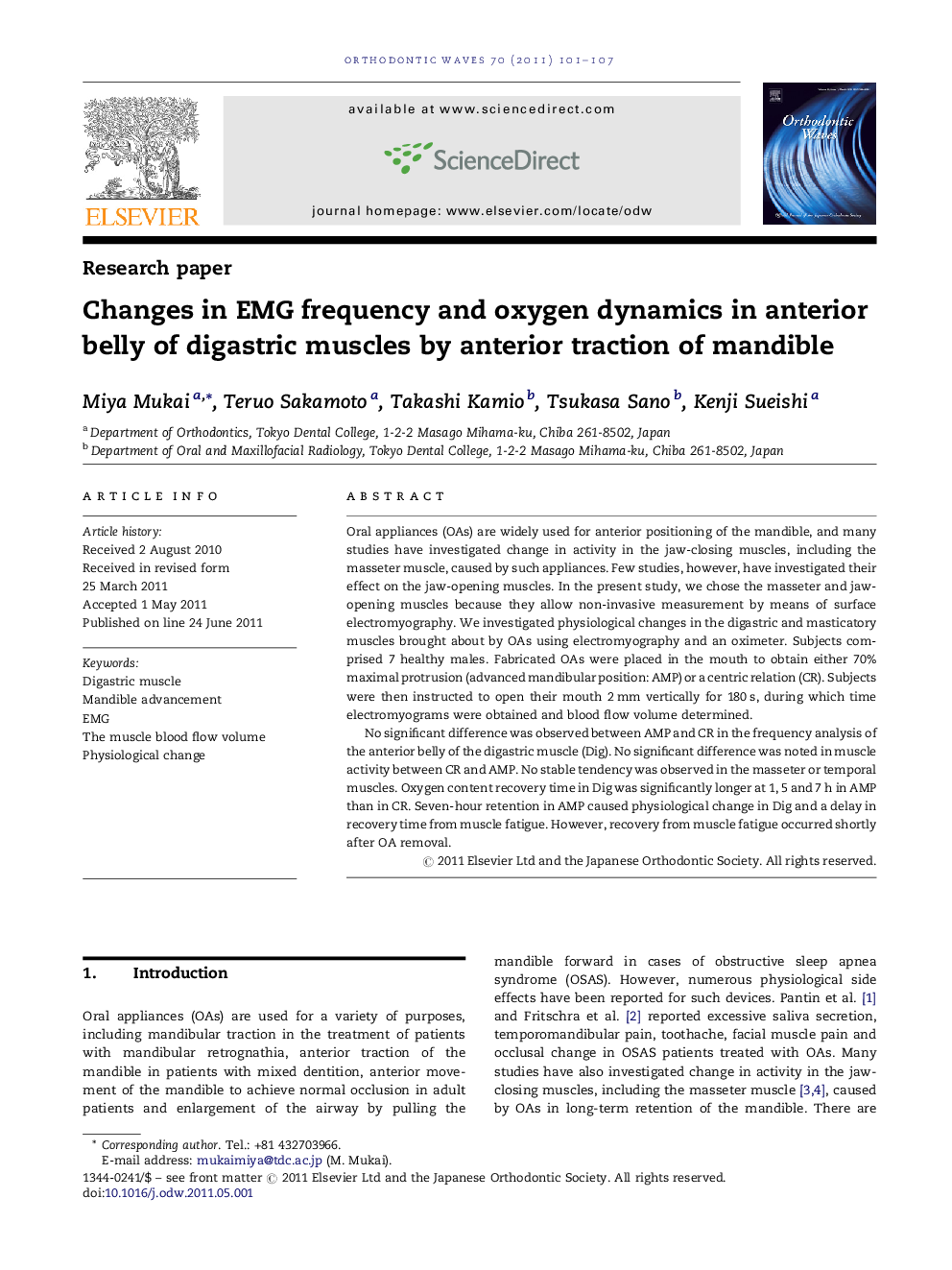| Article ID | Journal | Published Year | Pages | File Type |
|---|---|---|---|---|
| 3170491 | Orthodontic Waves | 2011 | 7 Pages |
Oral appliances (OAs) are widely used for anterior positioning of the mandible, and many studies have investigated change in activity in the jaw-closing muscles, including the masseter muscle, caused by such appliances. Few studies, however, have investigated their effect on the jaw-opening muscles. In the present study, we chose the masseter and jaw-opening muscles because they allow non-invasive measurement by means of surface electromyography. We investigated physiological changes in the digastric and masticatory muscles brought about by OAs using electromyography and an oximeter. Subjects comprised 7 healthy males. Fabricated OAs were placed in the mouth to obtain either 70% maximal protrusion (advanced mandibular position: AMP) or a centric relation (CR). Subjects were then instructed to open their mouth 2 mm vertically for 180 s, during which time electromyograms were obtained and blood flow volume determined.No significant difference was observed between AMP and CR in the frequency analysis of the anterior belly of the digastric muscle (Dig). No significant difference was noted in muscle activity between CR and AMP. No stable tendency was observed in the masseter or temporal muscles. Oxygen content recovery time in Dig was significantly longer at 1, 5 and 7 h in AMP than in CR. Seven-hour retention in AMP caused physiological change in Dig and a delay in recovery time from muscle fatigue. However, recovery from muscle fatigue occurred shortly after OA removal.
